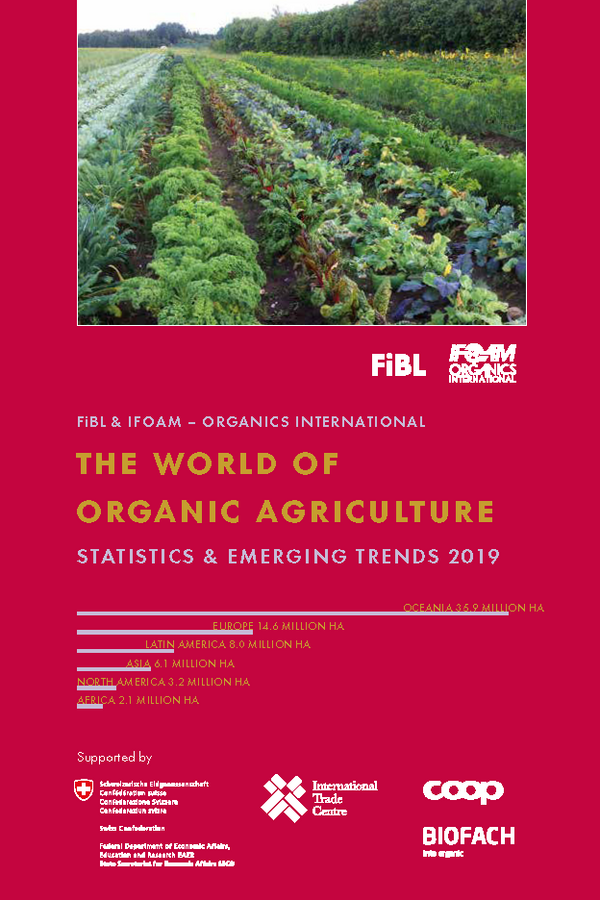- Share this article
- Subscribe to our newsletter
The World of Organic Agriculture 2019
Nearly 70 million hectares of farmland are organic, according to the statistical yearbook The World of Organic Agriculture published by the Research Institute of Organic Agriculture (FiBL) and IFOAM – Organics International in February 2019.
The yearbook presents the results of the annual survey on organic agriculture worldwide, contains reports authored by experts on the organic sector and on emerging trends. A further article focuses on organic cotton and a chapter reviews key commodities certified by selected Voluntary Sustainability Standards (VSS).
Organic farmland increased substantially
According to the latest FiBL survey on organic agriculture worldwide, organic farmland increased substantially, and the number of organic producers and organic retail sales also continued to grow, reaching another all-time high, as shown by the data from 181 countries (data as at end-2017).
A total of 69.8 million hectares were organically managed at the end of 2017, representing a growth of 20 per cent or 11.7 million hectares compared to 2016, the largest growth ever recorded. Australia has the largest organic agricultural area (35.6 million hectares), followed by Argentina (3.4 million hectares), and China (3 million hectares). Due to the large area increase in Australia, half of the global organic agricultural land is now in Oceania (35.9 million hectares). Europe has the second largest area (21 percent; 14.6 million hectares), followed by Latin America (11.5 percent; 8 million hectares). The organic area increased in all continents.
Globally, 1.4 per cent of farmland is organic. However, many countries have far higher share. Those countries with the largest organic share of their total farmland are Liechtenstein (37.9 per cent), Samoa (37.6 per cent) and Austria (24 per cent). In fourteen countries, 10 per cent or more of all agricultural land is organic.
Almost three million producers worldwide
In 2017, 2.9 million organic producers were reported, which is 5 per cent more than in 2016. India continues to be the country with the highest number of producers (835’200), followed by Uganda (210’352), and Mexico (210’000).
The market research company Ecovia Intelligence estimates that the global market for organic food reached 97 billion US dollars in 2017 (approx. 90 billion euros). The United States is the leading market with 40 billion euros, followed by Germany (10 billion euros), France (7.9 billion euros), and China (7.6 billion euros). Many major markets continued to show double-digit growth rates in 2017, and the French organic market grew by 18 per cent. The Swiss spent the most on organic food (288 Euros per capita in 2017). Denmark had the highest organic market share of the total food market (13.3 per cent).
(FiBL/IFOAM/ile)
More information and download of “The World of Organic Agriculture. Statistics and Emerging Trends 2019.”:
www.organic-world.net/yearbook/yearbook-2019.html





Add a comment
Be the First to Comment